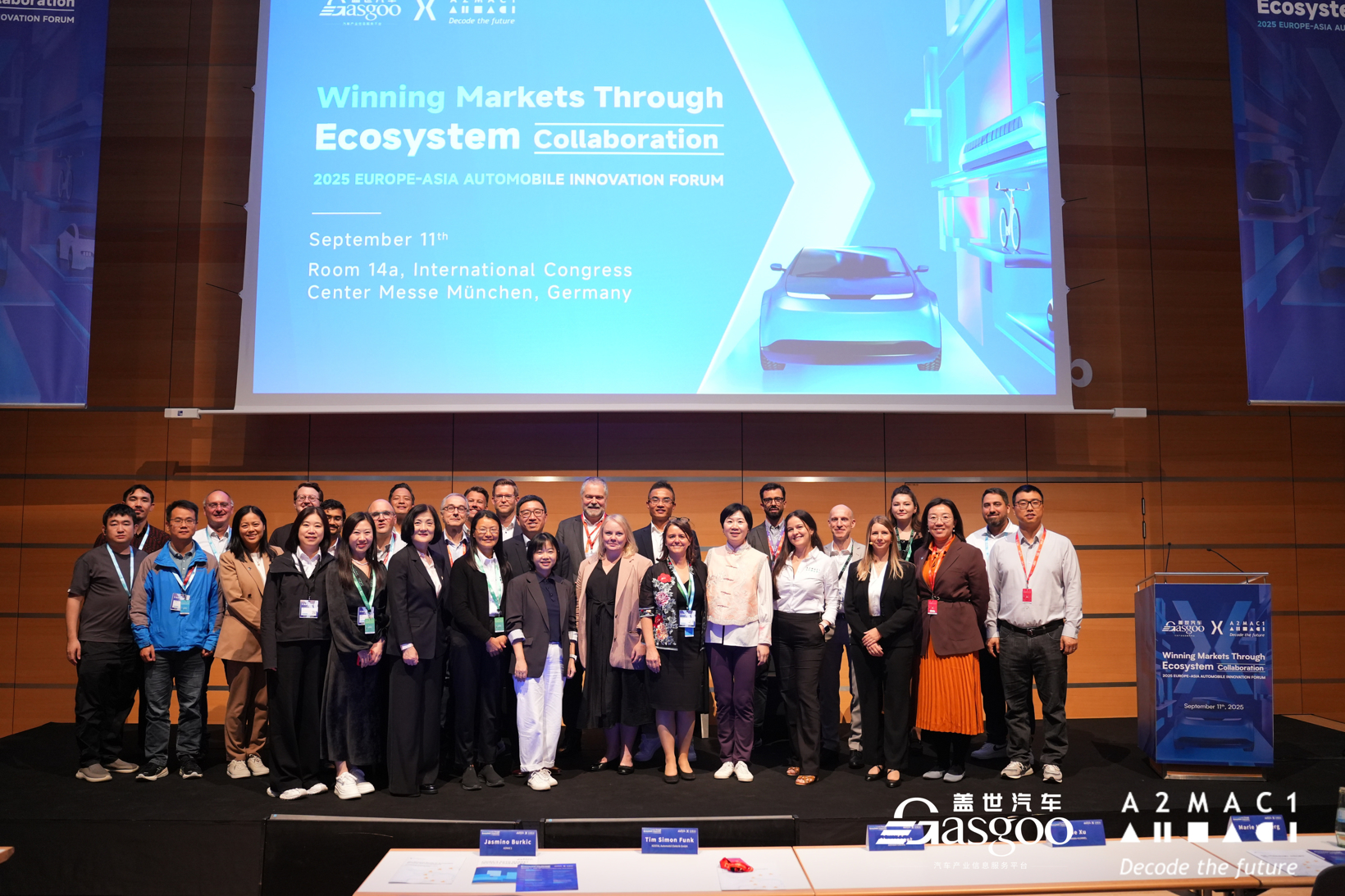






The forum focused on key industry themes including "Pathways for Eurasia automotive industrial synergy," "Breakthroughs in intelligent connectivity and electrification," "Sustainable supply chain architecture," and "Win-win models for cross-regional market development." Senior executives and experts from Europe and Asia — including representatives from the German Association of the Automotive Industry (VDA), Wuhan East Lake High-tech Development Zone Administrative Committee, A2MAC1, Gasgoo, Toyota Motor, Changan Automobile, NIO, Bosch, KOSTAL, OPmobility, MANN+HUMMEL, Telenor IoT, ThunderSoft, Johnson Electric, Neusoft, Black Sesame Technologies, MINIEYE, iMotion, QCraft, Boston Consulting Group, SANCEV and cs Beratung — shared insights on technology innovation, industrial collaboration, and the future of smart mobility.
Through in-depth discussions and case studies, the forum fostered a new development framework for co-creation in technology, shared ecosystems, and joint market expansion across the Eurasian automotive industry.

At the opening of the forum, Angela Mans, Head of Foreign Trade and International Relations at the German Association of the Automotive Industry (VDA); Jasmino Burkic, CRO of A2MAC1; Qingyu Pan, Deputy Director of the Wuhan East Lake High-Tech Development Zone Administrative Committee; and Tina Zhou, CEO of Gasgoo GmbH, delivered welcome remarks, extending a warm reception to all participants.
Qingyu Pan, Deputy Director of the Wuhan East Lake High-Tech Development Zone Administrative Committee, noted that Optics Valley is striving to seize emerging opportunities in the intelligent connected vehicle (ICV) sector. Centered on the integration of optical technology and vehicles, the zone focuses on key areas such as ADAS, smart chips, automotive software, navigation and positioning, and smart cockpits, and is already home to more than 2,500 core enterprises.
Timothy D'Herde, Head of Powertrain R&D at Toyota Motor Europe, emphasized that as the automotive industry accelerates toward decarbonization goals, Toyota stands out with its multi-pathway strategy—balancing battery electric, hybrid, and hydrogen technologies to meet diverse market needs. He shared insights into the rationale behind this diversified roadmap, the role of hybrid powertrains in Europe's transition, and the future direction of hydrogen mobility.
D'Herde noted that with the European Union's 2035 internal combustion engine ban approaching, battery electric vehicles (BEVs) have become the mainstream choice, and hybrids are often viewed as peripheral. From Toyota's perspective, however, real-world CO₂ reduction is paramount. Hybrid electric vehicles (HEVs) and plug-in hybrid electric vehicles (PHEVs) play a vital role in achieving tangible emission cuts — especially in regions with limited charging infrastructure — and can accelerate the decarbonization process.
Beyond next-generation hydrogen fuel cell sedans, hydrogen also shows strong potential in light commercial vehicles and even motorsport. In Europe, key questions remain about where fuel cell electric vehicles (FCEVs) can achieve the fastest and most scalable breakthroughs — in passenger cars, heavy-duty transport, or stationary power generation — and which partnership models are critical to building a viable hydrogen ecosystem. On these pressing topics, D'Herde shared a forward-looking perspective.
For queries, please contact Lemon Zhao at lemonzhao@smm.cn
For more information on how to access our research reports, please email service.en@smm.cn